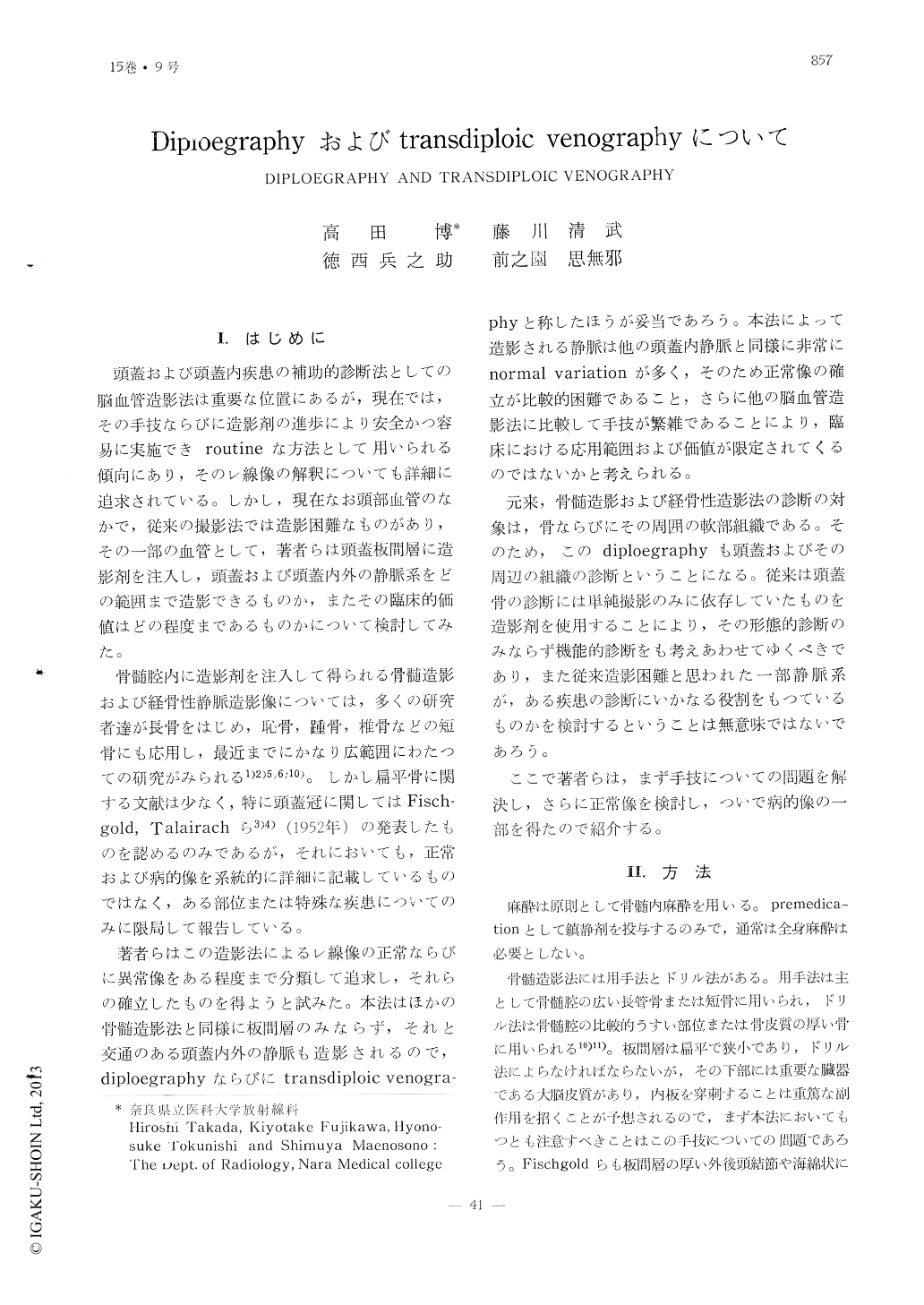Japanese
English
- 有料閲覧
- Abstract 文献概要
- 1ページ目 Look Inside
I.はじめに
頭蓋および頭蓋内疾患の補助的診断法としての脳血管造影法は重要な位置にあるが,現在では,その手技ならびに造影剤の進歩により安全かつ容易に実施できroutineな方法として用いられる傾向にあり,そのレ線像の解釈についても詳細に追求されている。しかし,現在なお頭部血管のなかで,従来の撮影法では造影困難なものがあり,その一部の血管として,著者らは頭蓋板間層に造影剤を注入し,頭蓋および頭蓋内外の静脈系をどの範囲まで造影できるものか,またその臨床的価値はどの程度まであるものかについて検討してみた。
骨髄腔内に造影剤を注入して得られる骨髄造影および経骨性静脈造影像については,多くの研究者達が長骨をはじめ,恥骨,踵骨,椎骨などの短骨にも応用し,最近までにかなり広範囲にわたつての研究がみられる1)2)5)6)10)。しかし扁平骨に関する文献は少なく,特に頭蓋冠に関してはFisch—gold, Talairachら3)4)(1952年)の発表したものを認めるのみであるが,それにおいても,正常および病的像を系統的に詳細に記載しているものではなく,ある部位または特殊な疾患についてのみに限局して報告している。
There are a number of reports describing osteomyelography and transosseous venogra-phy which are performed by injecting a con-trast medium into the marrow cavity and used for the diagnosis of the bones as well as their surrounding soft tissues. But there has been few description of the flat bone, espe-cially of the skull with the exception of study by Fischgold and Talairach et al. in 1952.
Concerning the radiography of the diploe, no sharp distinction has ever been established between the normal and pathological features, and there are few references available. These facts may tell that normal variations of pic-tures of this radiography is often encoun-tered, and that its diagnostic value and appli-cable range in the clinical diagnosis are res-tricted on accounts of its procedures being rather complicated, as compared with these for any other osteomyelography or cerebral angiography.
We have elucidated these points one after another, and put the radiography into practice experimentally and clinically. Then we could delineate the diploic veins and some parts of the venous systems inside and outside the cranium by injecting the contrast medium into the diploe through the needles devised by us. As a result normal or abnormal conditions could be discovered radiologically to some extent.
The veins delineated by injection into the tuber frontale, parietale and occipitale are the v. diploica frontalis, temporalis et occipitalis, v. meningea media, sinus sphenoparietalis, sinus sagittalis superior et transversus, veins of frontal scalp, v. occipitalis, plexus venosi pterygoideus et occipitalis.
We performed the present radiography in the patients having disturbances in the cra-nium or bone i. e. the fracture of the skull, epidural hematoma, metastasis of the carcino-ma of the skull and cerebral tumours and obtained several interest radiograms on the point of clincal stand.
Further studies are needed for the discovery of the other veins which can be visualized by this radiography, for the analysis of its normal variation, and for the investigation of its diagnostic value and significance in the cases of cranial disturbances.

Copyright © 1963, Igaku-Shoin Ltd. All rights reserved.


